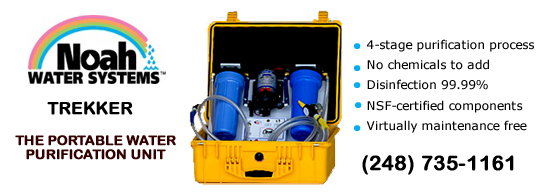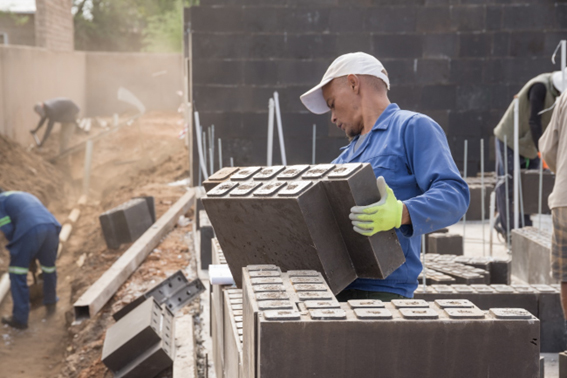WATERTODAY learned more from Maxine Mathias who spoke for the Polycare Team.
The Challenge
WT: What was the impetus behind the founding of Polycare? Where has the journey taken Polycare since its inception?
Mathias: Polycare started with the idea of providing a way of construction that allows people to be empowered with easy-to-construct buildings. The idea sprouted in 2010, after the Haiti earthquakes when the CEO, Dr. Gerhard Dust wanted to develop a way to help crisis-stricken communities with rebuilding their homes and towns in a more impactful way.
WT: What were the challenges that led to your mission?
Mathias: Our mission has evolved a lot over the years, to answer the call and demand of a more sustainable industry.
WT: There is an endless demand for infrastructure to support urban expansion and yet resources are scarce. Please elaborate on this challenge.
Mathias: At the Urban Age Conference in Venice, it was declared that social peace and security for the whole world in the next few years depends on whether we succeed in building 1 million residential units every week at an affordable price. 2.5 billion more people will be living in cities by 2050, the vast majority in Africa and Asia.
Much of the infrastructure to support this urban expansion is yet to be built.
One of the biggest problems is limited building material. Although sand is available in many places in the world, it often cannot be used to make concrete and consequently to build houses. Desert sand for example is not suitable for conventional methods.
The Solution
WT: What is the Polyblock concept?
Mathias: Our idea is to create more effective ways of building – not only from the perspective of simplifying it, but also evaluating the chain of resources and finding ways around current problems the industry faces.
We wanted to make use of materials that are readily available, rather than mining them from sensitive ecosystems.
We created a system for disassembly so that buildings can be built easily, in a modular style, but also allowing the possibility to be taken apart again and be rebuilt in a new design.
We envision a future where the materials used in buildings are seen as valuable assets for a circular economy, that are designed for reuse and repair.
WT: How did you come to realize a solution?
Mathias: We are always doing a lot of R&D at our headquarters. We are research-driven company that sees its products as ever evolving and always improving. We also value collaboration and like to team up with other research institutes and building professionals that provide valuable insight. Currently we are working on exploring a new family of materials, that brings us closer to carbon neutral or even carbon negative in the near future.
Polyblock Polymer Concrete
WT: What are polyblocks?
Mathias: Polyblocks make up the walling system that is our core innovation. The blocks make up a system that allows virtually any straight wall configuration to be constructed in a much smaller time frame and with zero waste on site. They fit together in a Lego-like way, fitted through threaded rods that are tightened to keep the building stable
The modular nature of the elements means that they can be reused, allowing the possibility to reconfigure buildings and whole cities in a preserving way by means of building back, reusing and adapting to the needs of the people and societies.
WT: What are they made of?
Mathias: Polymer concrete is made from resin which is the binding material (around 12% of the volume) and a filler material (88% of the volume). The inside of the block is an insulation core, made of Rockwood or other insulation materials that allow the building to save energy in the long term
WT: How do they compare to regular concrete blocks? In strength? In weight? In construction? Emissions?
Mathias: Polymer concrete is around 4 times stronger than regular concrete, so that’s why only a small amount of the block is made from the concrete. The blocks are lightweight but much larger than the average brick, with the biggest one measuring around 15 kgs.
During construction, no glue or mortar is necessary, and no waste is created on site. The carbon emissions compared to regular methods of building are reduced by 58%
WT: Is any water consumption part of this?
Mathias: None at all!
WT: What are the other advantages?
Mathias: The benefits range from being able to create flexible buildings that can be adapted and dismantled when needed. The blocks themselves perform better when comparted to regular blocks in insulation performance, which leads to long-term energy savings.
WT: Can the blocks accommodate electrical wiring? Water pipes?
Mathias: Yes, there is a special block that is hollow (without insulations core) that allows any necessary pipes or wires to come through easily
Projects:
WT: Tell us about your completed projects. Where are your projects located?
Mathias: Some of our projects include schools, learning centers, residential homes and self-sufficient facilities. With partners we have also realized unique spaces that have become part of an architectural park in France, a Tiny-house-inspired office and large workshop space at our HQ.
We have completed projects in several corners of the globe – From South Africa, Zambia, Namibia, France and Germany
WT: What are you most proud of?
Mathias: We see circular value chains coming in through both the material aspect and the physical building components. Making use of a surplus of secondary streams of materials that are readily available is a big step in the right direction (away from mining sand and heavy use of water). Once the product is created, we build it up without glue or mortar. That way, the elements retain their value and can be reused again, completely avoiding demolition in the future.
WT: What’s next?
Mathias: Our next challenge is to develop carbon-neutral polyblocks. At this point, we save 60% CO2 emissions, but we want to cut that as much as possible. Currently, our research is focused on developing a new family of materials – geopolymers.
We have already manufactured the first prototypes which with their raw materials (secondary raw material) and the new binder system (geopolymerisation) are able to save 90% CO2 compared to cement concrete.
By integrating carbon sinks, afirst CO2 neutral building block has already been produced as a prototype.
This will benefit the building materials industry, to whom Polycare can offer very concrete solutions in the field of decarbonization. Polycare can offer a circular building system based on this material innovation.
This holistic approach generates significant cost benefits, which we estimate at 30-40% savings along the entire value chain.
Our first promising tests with geopolymers and other alkali-bound systems made from waste/secondary raw materials and various tests have been completed but still require further development.
WT: And one last drop...please leave us all with something to think about.
Mathias: For this, we share a quote by Stephen Bayley
“The best argument for good design is that it lasts. The best argument for good science is that it deplores waste.”
suzanne.f@watertoday.ca




